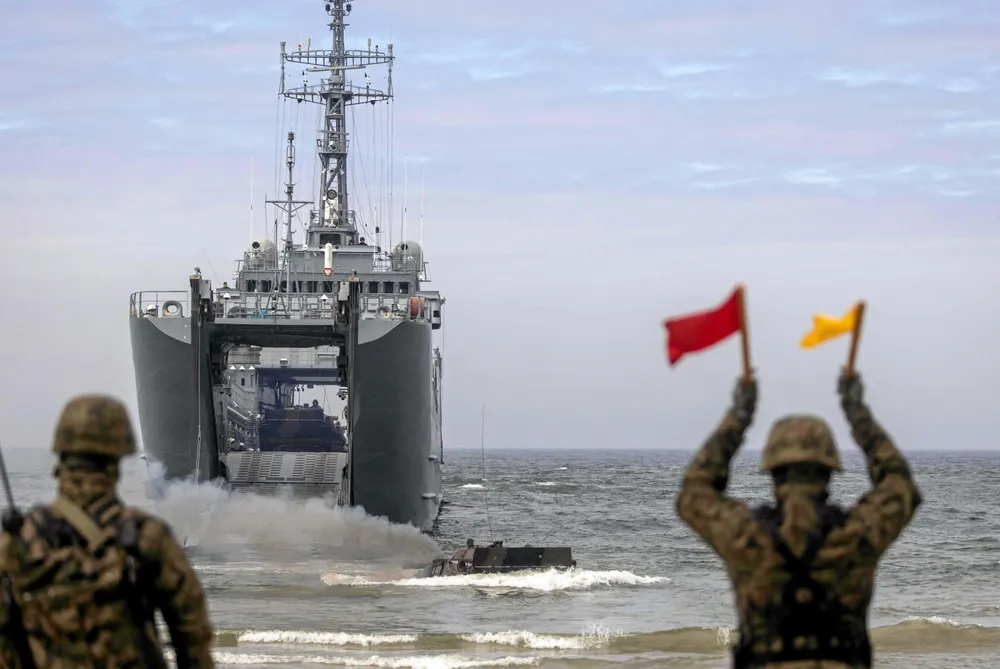Poland sees offshore wind as military 'opportunity' in contrast to Sweden
Sector in talks with military to place radar and sonar systems at offshore wind farms, Polish association and WindEurope say

Poland also is in a completely different [geographical] situation than Poland, as the “Russians wouldn't have to attack us through the water [as the Kaliningrad exclave has a direct land border with Poland],” Gajowiecki pointed out.
“We also have different military forces than Sweden. They [the Swedes] are widely spread out throughout the Baltic Sea. The radar and sonar systems they have created in the Baltic Sea region are different,” he said.
“We're looking at offshore wind as an opportunity also [for military surveillance]. All offshore wind farms in Poland must be equipped to compensate for any negative impact on military installations. To assess this, a specialised technical expertise is carried out.
“It seems to us that the ongoing discussions with the military are sufficiently mitigating the relationship between the military and the wind industry.”
PWEA’s Gajowiecki said the sector in Poland has had discussions with the military for some time now.
“However, the equipment is very expensive and the possibility of splitting the costs between [the state] and investors should be discussed. We are looking at how it could happen.”
He also noted that the offshore wind farms currently in planning are off Poland’s western and central Baltic Sea coast, and not in the east towards the border of Russia’s Kaliningrad exclave.
A key difference between Sweden and most other European offshore wind nations is that Sweden has an open-door, or developer-led, approach to the localisation of offshore wind farms, while Poland and others follow a centralised approach.
Under the open-door system, developers choose themselves in which areas at sea they want to carry out projects and then submit them to permits the government eventually has to approve or reject (as happened now in the case of the Swedish projects). In such as system, different project developers often also apply for overlapping offshore sites.
Under a centralised system such as Germany, Denmark or Poland apply, areas are designed by authorities as part of a maritime spatial development plan, and the government before auctions take place evaluate whether the sites have potential conflicts with other users of the sea space, such as fishermen or the military.
‘Poland can’t afford similar submissiveness’
Gajowiecki noted that military threats also affect other sea areas, not only the Baltic.
“In this context, cooperation within Nato is crucial. The failure to complete these investments confirms the effectiveness of Russian intentions to intimidate and defeat energy transition efforts in EU countries,” the PWEA president said.
“This will encourage the Russians to continue with actions of a similar nature all the more. Unfortunately, it also shows the weakness of a state that gives in to such blackmail.
“Poland and the other countries of the Baltic Sea basin cannot afford similar submissiveness - only joint action by the allies and decisive action can discourage Russia's attempts to interfere in the energy security of EU and NATO countries in the future.”
Karina Würtz, managing director of Germany’s offshore wind energy foundation, regretted that it has "not been possible to bring together security and energy policy objectives and to allay any security concerns" in Sweden.
"In any case, we do not expect this to send a signal to other countries, either on a factual or political level," she said.
"Both in Germany and at the European level, the dialogue between security and planning authorities and the offshore wind industry is now being conducted very constructively with the aim of both increasing the protection of the critical maritime energy infrastructure and leveraging possible synergies for national security.
"In the latter case, we are more likely to look at the contribution that offshore wind farms and their sensors could make to national situational awareness across Europe, rather than seeing these structures as obstacles, with the only technical solution from a defence perspective ultimately being not to build them."
(Copyright)